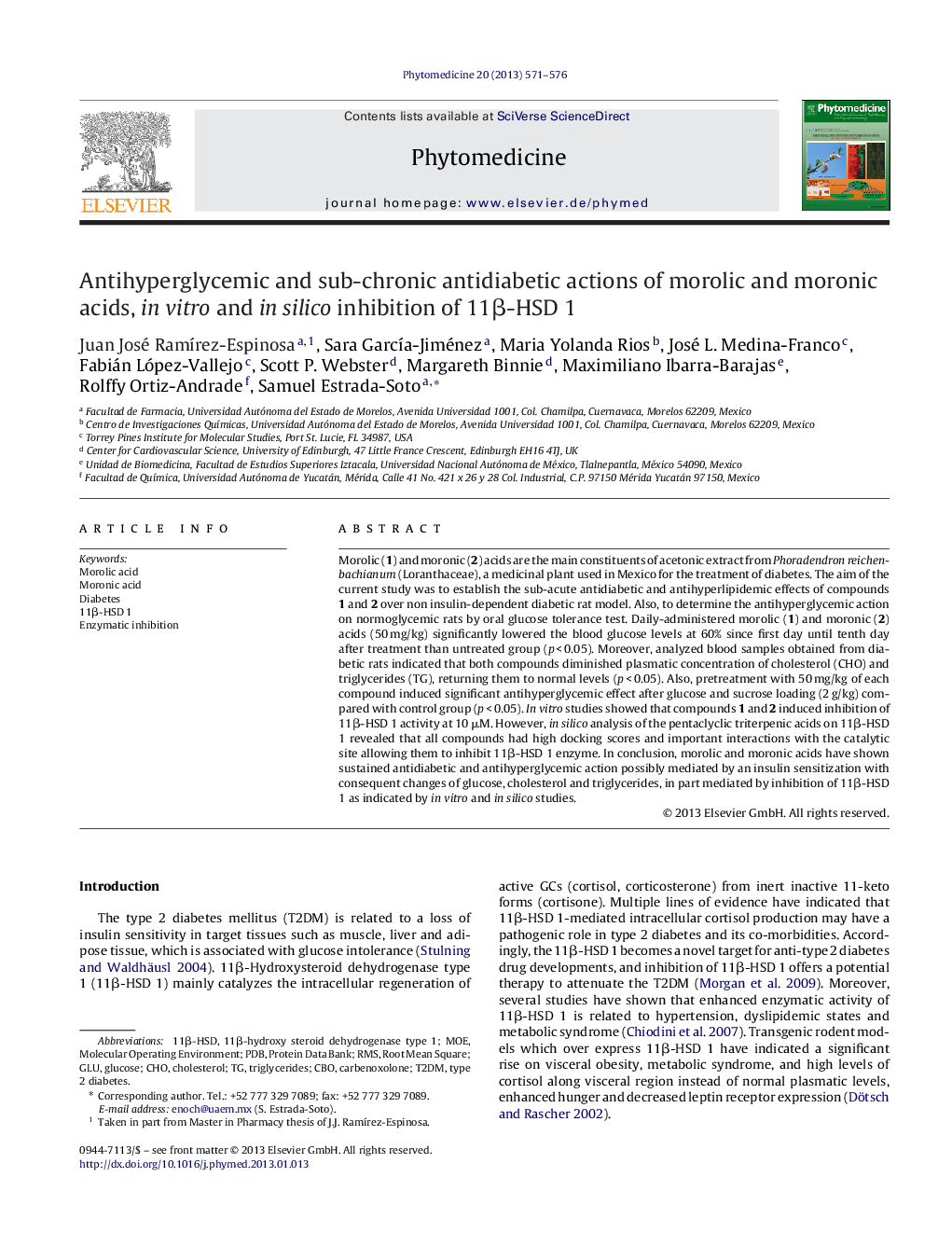| Article ID | Journal | Published Year | Pages | File Type |
|---|---|---|---|---|
| 5816742 | Phytomedicine | 2013 | 6 Pages |
Morolic (1) and moronic (2) acids are the main constituents of acetonic extract from Phoradendron reichenbachianum (Loranthaceae), a medicinal plant used in Mexico for the treatment of diabetes. The aim of the current study was to establish the sub-acute antidiabetic and antihyperlipidemic effects of compounds 1 and 2 over non insulin-dependent diabetic rat model. Also, to determine the antihyperglycemic action on normoglycemic rats by oral glucose tolerance test. Daily-administered morolic (1) and moronic (2) acids (50 mg/kg) significantly lowered the blood glucose levels at 60% since first day until tenth day after treatment than untreated group (p < 0.05). Moreover, analyzed blood samples obtained from diabetic rats indicated that both compounds diminished plasmatic concentration of cholesterol (CHO) and triglycerides (TG), returning them to normal levels (p < 0.05). Also, pretreatment with 50 mg/kg of each compound induced significant antihyperglycemic effect after glucose and sucrose loading (2 g/kg) compared with control group (p < 0.05). In vitro studies showed that compounds 1 and 2 induced inhibition of 11β-HSD 1 activity at 10 μM. However, in silico analysis of the pentaclyclic triterpenic acids on 11β-HSD 1 revealed that all compounds had high docking scores and important interactions with the catalytic site allowing them to inhibit 11β-HSD 1 enzyme. In conclusion, morolic and moronic acids have shown sustained antidiabetic and antihyperglycemic action possibly mediated by an insulin sensitization with consequent changes of glucose, cholesterol and triglycerides, in part mediated by inhibition of 11β-HSD 1 as indicated by in vitro and in silico studies.
Graphical abstractDownload high-res image (146KB)Download full-size image
